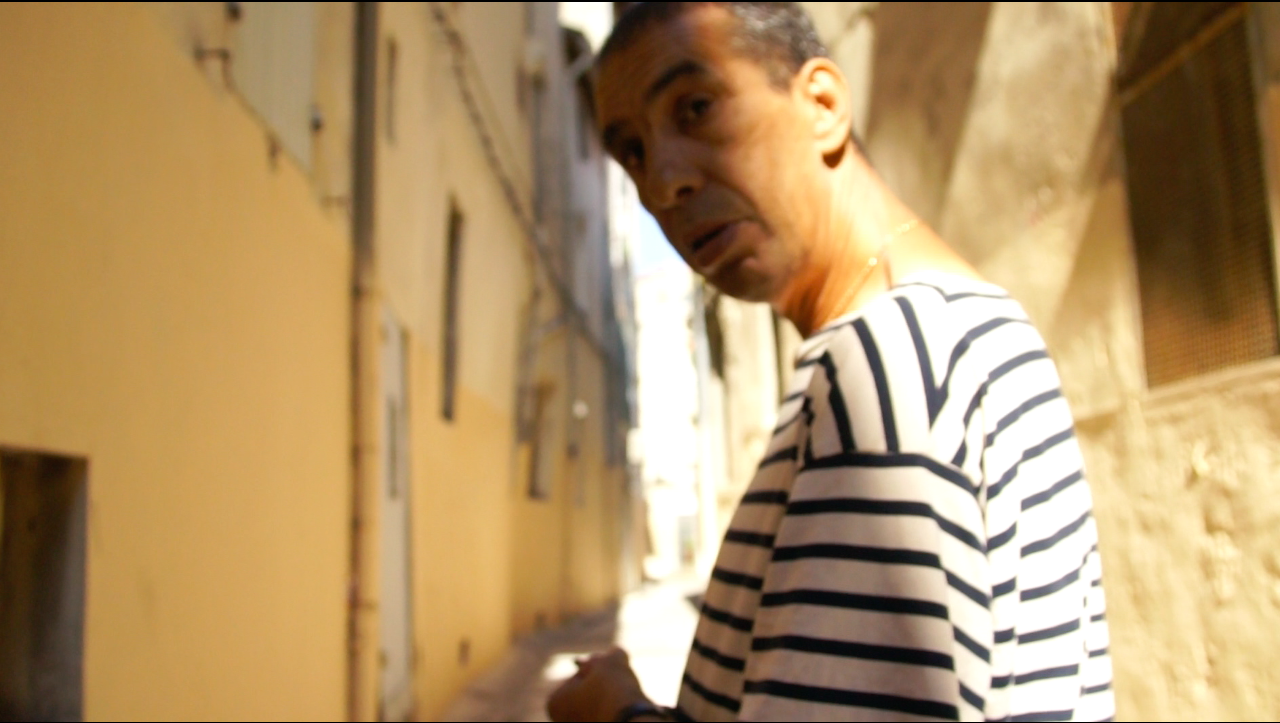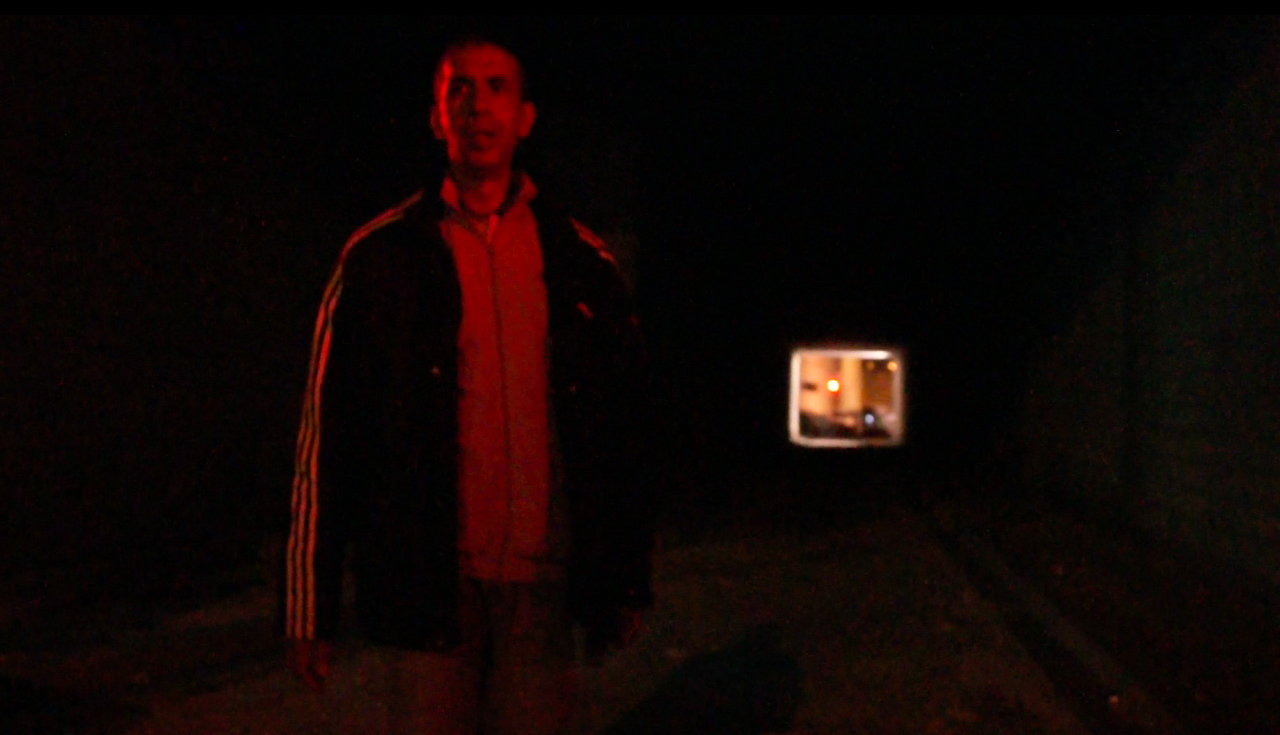Une partie de nous s’est endormie
Synopsis
Par la ville, les tunnels, les ruelles étroites d’Avignon, Djilali nous emmène dans les boyaux d’un dédale, celui de sa vie. Lui et la réalisatrice devisent, de jour comme de nuit, au rythme de leur marche. Du récit de ses rêves nocturnes à celui de ses expériences, Djilali raconte, par bribes, un envers de notre époque.
«Je cherche mon identité. L’avez-vous vu? «Djilali, un ancien détenu de longue durée, se promène dans l’obscurité protectrice des rues étroites. Parfois, l’architecture d’Avignon semble symboliser son intériorité et un sombre passé itinérant en lui. Derrière lui, Marie Moreau est bien plus qu’un documentariste: de toute évidence, leurs échanges longs et fructueux ont nourri leurs pérégrinations. Dans ce film parlant, le récit des rêves et éventuellement l’autobiographie fictionnelle se fondent dans un projet commun: « Combien de moments avez-vous ? Combien en avez-vous besoin pour faire un film ? », S’interroge Djilali. L’édition suit le flot onirique inhérent aux états anciennement induits par la drogue et aujourd’hui par un effroyable « carcan psychologique ». « Malgré le toit, je me considère comme sans-abris », confie le marcheur. (Charlotte Garson)
“I’m looking for my identity. Have you seen it?”… Djilali, a former long-term detainee, walks around in the protective obscurity of narrow streets. Sometimes Avignon’s architecture seems to symbolize his interiority and a dark itinerant past wizened inside him. Behind him, Marie Moreau is much more than a documentarist: clearly, their long and fruitful exchanges have nourished their wanderings. In this talking-walking film, the telling of dreams and possibly fictionalized autobiography merge into a shared project: “How many moments have you got? How many do you need to make a film?” inquires Djilali. The editing follows the dreamlike flow inherent to the states formerly induced by drugs and today by an appalling “psychological straightjacket”. “In spite of the roof, I consider myself as homeless”, confides the walker. (Charlotte Garson)
«Je cherche mon identité. L’avez-vous vu? «Djilali, un ancien détenu de longue durée, se promène dans l’obscurité protectrice des rues étroites. Parfois, l’architecture d’Avignon semble symboliser son intériorité et un sombre passé itinérant en lui. Derrière lui, Marie Moreau est bien plus qu’un documentariste: de toute évidence, leurs échanges longs et fructueux ont nourri leurs pérégrinations. Dans ce film parlant, le récit des rêves et éventuellement l’autobiographie fictionnelle se fondent dans un projet commun: « Combien de moments avez-vous ? Combien en avez-vous besoin pour faire un film ? », S’interroge Djilali. L’édition suit le flot onirique inhérent aux états anciennement induits par la drogue et aujourd’hui par un effroyable « carcan psychologique ». « Malgré le toit, je me considère comme sans-abris », confie le marcheur. (Charlotte Garson)
“I’m looking for my identity. Have you seen it?”… Djilali, a former long-term detainee, walks around in the protective obscurity of narrow streets. Sometimes Avignon’s architecture seems to symbolize his interiority and a dark itinerant past wizened inside him. Behind him, Marie Moreau is much more than a documentarist: clearly, their long and fruitful exchanges have nourished their wanderings. In this talking-walking film, the telling of dreams and possibly fictionalized autobiography merge into a shared project: “How many moments have you got? How many do you need to make a film?” inquires Djilali. The editing follows the dreamlike flow inherent to the states formerly induced by drugs and today by an appalling “psychological straightjacket”. “In spite of the roof, I consider myself as homeless”, confides the walker. (Charlotte Garson)

